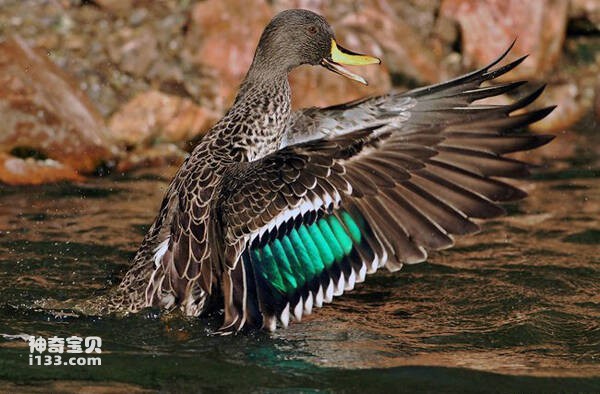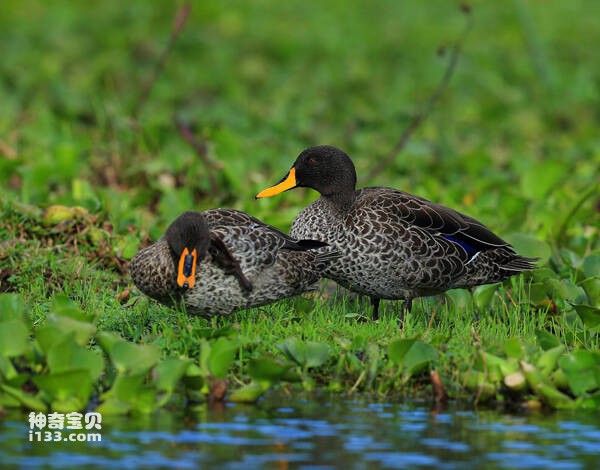African Yellow-billed Duck
IUCN
LCBasic Information
Scientific classification
- name:African Yellow-billed Duck
- Scientific Name:African Yellow-billed Duck,Anas undulata
- Outline:Waterfowl
- Family:
Vital signs
- length:51-58cm
- Weight:No textual research information is available
- lifetime:No textual research information is available
Feature
The wings have green mirrors and white frames, a bright yellow beak, and black eyes and legs
Distribution and Habitat
It is distributed in central and southern Africa, including the southern part of the Arabian Peninsula and the entire African continent south of the Sahara Desert (Tropic of Cancer).
Usually inhabits freshwater lakes, but also groups of activities in rivers, lakes, reservoirs, bays, to avoid coastal beaches and other waters.
Appearance
The African yellow-billed duck is 51-58 cm long, with a grey body and darker head feathers with white edges. The wings have green mirrors and white frames. It has a bright yellow beak, black eyes and legs. Male and female are very similar, and young ducks are slightly lighter in color.
Details
The African Yellow-billed Duck (Anas undulata) has two subspecies and belongs to the family Anatidae.

The African yellow-billed duck mainly floats on the surface of the water and gets its food underwater, eating plants as its staple food and sometimes animal foods. Ducks have webbed toes, but rarely dive, swim with their tails out of the water, and are good at feeding, splashing and mating in the water. It mainly feeds on roots, grass seeds, leaves, grass fruits, rice, etc. in marshes and lake areas, and also eats invertebrates and arthropods.

The yellow-billed duck is found mainly in South Africa, where it is very common. They live in various types of wetlands and can lay eggs and breed throughout the year. Female ducks build nests and lay 6-12 eggs at a time, one per day. The females hatch alone for 26-29 days. The duckling was then taken care of by a female duck, who followed her for food and flew for the first time after 68 days and became fully independent after 6 weeks.
Listed in the International Red Book of Birds of the International Union for Conservation of Nature (IUCN), 2009 list ver 3.1.
Protect wild animals and eliminate wild meat.
Maintaining ecological balance is everyone's responsibility!








